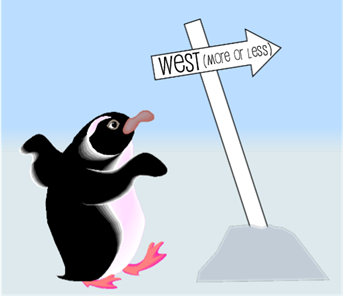... west is west (up to a point).
This is a further note prompted by the issuing of C&B2.

The enclosure sets out all the
instances where ‘eastern’ and ‘western’ are used in
names in the new list. New English names are marked by an *. The second column
lists the English names recommended in Gill & Wright 2006, where different
from the C&B2 name. The instances where those adjectives refer to Australian
distribution do not call for comment.
I find curious the choice of ‘Eastern
Koel’ over ‘Pacific Koel’, which had been previously used. It
is true that the distribution extends further west than the Pacific, but it is
not in that respect eastern so far as Australia is concerned. This is the sort
of tangle that led to ‘Pacific Golden Plover’ replacing ‘Eastern
Golden Plover’. If the ‘more appropriate’ game is going to
be played to reopen existing names, ‘Pacific Baza’ should be ‘Eastern
Baza’.
‘Eastern Reef Egret’
would seem to depend on there being a ‘Western Reef Egret’ or at
least some other kind of Reef Egret, which is tied up with the debate about the
status of subspecies of the Little Egret in Africa and Asia. The ‘Western
Reef Egret’ E gularis (not in my list) is in the C&B2 supplementary
list by virtue of possible obs in Australia (as well as Cocos Is) so some of
those were no doubt east of some Eastern Reef Egrets. Incidentally the Eastern
Reef Egret is also the most westerly Reef Egret in the world, as it occurs east
of the 180° meridian - in both Samoa and the Tuamotus.
‘Eastern Osprey’
depends on the splitting off of a subspecies that extends from Java to New
Caledonia, so, OK - that would be ‘eastern’ providing you’re
using a map with the UK in the middle of it. Same with the ‘Eastern
Great Egret’, which extends from India to New Zealand. Much the same
with ‘Eastern Grass Owl’, which is a name that has been around
rather longer.
‘Eastern Barn Owl’
is an English name that in the C&B2 text, along with the taxonomic split,
is ventured very tentatively. Again the Eastern Barn Owls in Samoa and Niue,
along with the introduced ones in Hawaii, will be the westernmost Barn Owls in
the world.

